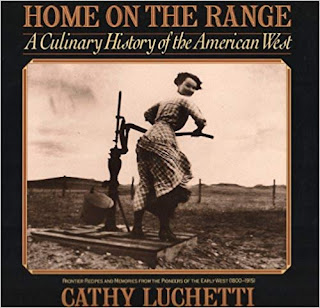Post by Doris McCraw
writing as Angela Raines
Below is a news report from the August 29, 1885, Gazette in Colorado Springs, that helped to start a rabbit hole of research on the killer "Joe Ward". There is much more to the story, and a paper on the subject has been written. But I thought some might find the early reports interesting.
The headline read: Joe
Ward, the slayer of Scheidler, riddled with bullets,
the career of a noted Colorado desperado terminated,
review
of the crime committed by Ward in the city,
Early
residents of Colorado Springs remember that on February 1879,
Lafayette Scheidler, the young man eighteen years of age, was shot and
killed by one Joe J Ward, who, when he came here, did not have a very
enviable character. The circumstances of the case were these:
Scheidler and two companions visited a house on the west side of the Monument, just north of Tejon street, which was occupied by a woman who had borne a bad reputation.
Upon knocking for admittance
they were told by an occupant that the woman had gone to Leadville.
Scheidler and his companions immediately turned back to town. After
having gone from the house but a short distance Scheidler was shot in
the back and after lingering nearly two days died.
It being ascertained
that the shooting had unquestionably been done by Ward, the woman's
husband, the officer searched the house, but the man was not to be
found. Sheriff Dana, who was then Marshall of Colorado Springs, the
same night detected and arrested Ward as he was coming in from the
brush to take a horse from the barn with which to make his escape.
In
the meantime, the news of the shooting had spread about town in a
crowd gathered to lynch Ward. Scheidler was well-known and a popular
young fellow, while Ward had an unsavory reputation and had
frequently boasted of having killed his man in southwestern Kansas.
Comparing this record with that of Scheidler the crowd were
determined to make him pay the penalty of his crime but the officers
very cleverly evaded them and place the prisoner within the
stonewalls of the county jail.
On April 22 of the same year Ward, who
had been indicted by the grand jury, was arraigned before Judge Bowen
of the fourth judicial District, now US Senator. The defendant was given
a fair and impartial trial being prosecuted by CW Burris and defended
by Gen. Danforth. As a result, Ward was committed to Canyon City for a
term of two years.
In
his sentence Judge Bowen said that the verdict was fully sustained by
the evidence. At the same time, he considered the reckless and useless
resort to firearms, but under the recommendations of mercy by the
jury and the consideration of aggravating circumstances he would make
the sentence two years.
Ward
served out his sentence, and it was hoped that it would give him a
lesson. Not so, however; for no sooner had he been released and he
went to Leadville, where he was joined by the disreputable wife who
had placed him behind the bars. Leadville was in those days very
prosperous. The wife opened a dance hall and the husband lived off
the profits. He lived liberally, made things lively with his six-shooter and occupied a cell in the city jail almost weekly. Finally,
finding even the cloud city too warm for him, he departed for a more
congenial climate, taking with him his wife and daughter.
When we next heard of Ward was last summer in Northpark, where he and his
wife were keeping a sort of a tavern where liquors were disposed of
without a license, and the husband and a few pals were occasionally
raiding cattle ranches. Here the depraved wife by undue familiarity
with a young cowboy aroused the ire of the husband. The result was he (the young man) was killed, in cold blood, one day on his way to Georgetown. A report
of the shooting appeared in the Gazette at the time, and so indignant
were the residents of that locality in consequence that Ward was
lucky in escaping the country alive.
From
Northpark we follow this desperados history to Gunnison County where
it is reported that he with his ready shooter disposed of his man,
but we cannot confirm the story.
Now
comes the report that on Tuesday a body was found on an un-frequented
road leading to Green River which was identified as that of Joe Ward.
Beside him was lying his horse, that had fallen with two bullet holes
in his side, and that was all that was left to tell the story of
death. Upon examination, it was found that Ward had been shot five
times, and his body was completely riddled with bullets. It is said
that Ward had been having some trouble in that region, as in this,
over his wife and that upon this occasion he started out to prescribe
his favorite dose for a cowboy. Thus another Colorado outlaw with the
record takes his departure.
Doris Gardner-McCraw -
Author, Speaker, Historian-specializing in
Colorado and Women's History
Colorado and Women's History
Angela Raines - author: Where Love & History Meet
Books: Angela Raines Books










